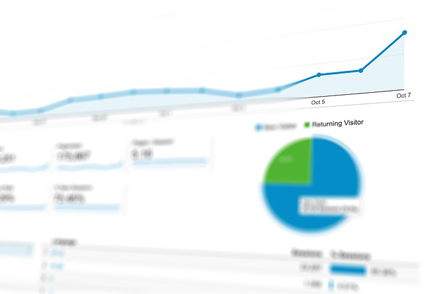Can you handle the truth about your marketing data?
Daniel Keys Moran, American author and computer programmer, is quoted as saying: "You can have data without information, but you cannot have...
3 min read
Mark Parent
June 9, 2016 10:03:09 AM EDT


Tom Smith is the principal consultant with Insights From Analytics, which solves business problems and informs marketing plans using analytics and qualitative research.
We recently asked him about how businesses should use analytics to grow revenue. Here's what he had to say:
When I started working on consumer packaged good business and was able to use data to show:
1. Everyone talks about "big data," while there's a lot you can do with small data that you've had "in house" for years.
2. Don't rely purely on analytics to make decisions. Get out and talk to customers to understand the "why" behind the data.

Everyone is talking about "Big Data," but you can find a lot of value in small data. ![]()
Understand the vision, mission, values and strategic positioning of the firm and ensure everyone is aligned; only then can you begin to set objectives upon which everyone will agree. Establish SMART (specific, measurable, achievable, relevant and time bound) goals or objectives and determine the methodology for measuring each. When designing research, know what you're going to do with the results of a question before you ask it, otherwise you're wasting your time, as well as your customers'.
By far in-depth one-on-one interviews. Unlike quantitative surveys, I can ask follow-up questions that yield far more insights. In focus groups I feel like respondents tell you what they think you want to hear, or to try and sound smart to the other folks in the room. With a one-on-one, I'm able to get respondents to relax and tell me what's really on their minds and then ask why they feel that way or give me an example of what they're talking about.
 Sit down for an in-depth interview to gain more insight into your data and performance.
Sit down for an in-depth interview to gain more insight into your data and performance. ![]()
Ask the right questions and tabulate correctly. I'm a great believer in using tracking studies to view changes over time.
Relying strictly on analytics without talking to customers to verify and fill-in information.
We did some quantitative work for GTE Wireless before they were purchased by Verizon to understand, and reduce, customer churn. We learned that the top 10 percent of customers accounting for 90 percent of the revenue needed very different incentives than did the rest of the customers. Once we learned this, we were able to reduce churn of the top 10 percent by 16 percent saving more than $60,000,000 in potentially lost revenue.
Understand the 20 percent of customers accounting for 80 percent of your revenue and then drill even deeper to understand the 4 percent of customers accounting for 64 percent of your revenue. Segment and provide personalized and relevant information to your customers - show them you're listening and you care.
I continue to believe you can accomplish a great deal with in-depth one-on-one interviews and single and multi-variable regression analysis of small data.
I'm excited about the growth of big data and analytics tools that will enable us, and all customer-facing employees, to have a 360 degree view of the customer so that we can provide better, more personalized customer experiences.
Going forward, companies will differentiate on the basis of customer experience (CX). If you're not able to provide your customers with a consistently excellent CX, you will not be a category leader and I dare say you won't be in business a lot longer. Customers will not tolerate poor, impersonal customer service.
A special thanks to Tom for lending his time and insight to help us out with our blog!
For those of you who would like some more information about analytics and measuring ROI on your marketing efforts, check out our blog article, "(How) Are you measuring your marketing results?"and get your free copy of our eGuide The six marketing metrics your boss actually cares about.
Make sure to connect with us on LinkedIn to get valuable insight on the latest news in marketing and website design. Follow us here:

Daniel Keys Moran, American author and computer programmer, is quoted as saying: "You can have data without information, but you cannot have...

In chapter 2 of his SugarBush President Mark Parent’s new eBook, “Unlock The ROI of Your Marketing With Analytics”, the inbound marketing expert...

Inside the new eBook, “Unlock The ROI of Your Marketing With Analytics”, marketing expert and SugarBush President Mark Parent explains how marketing...